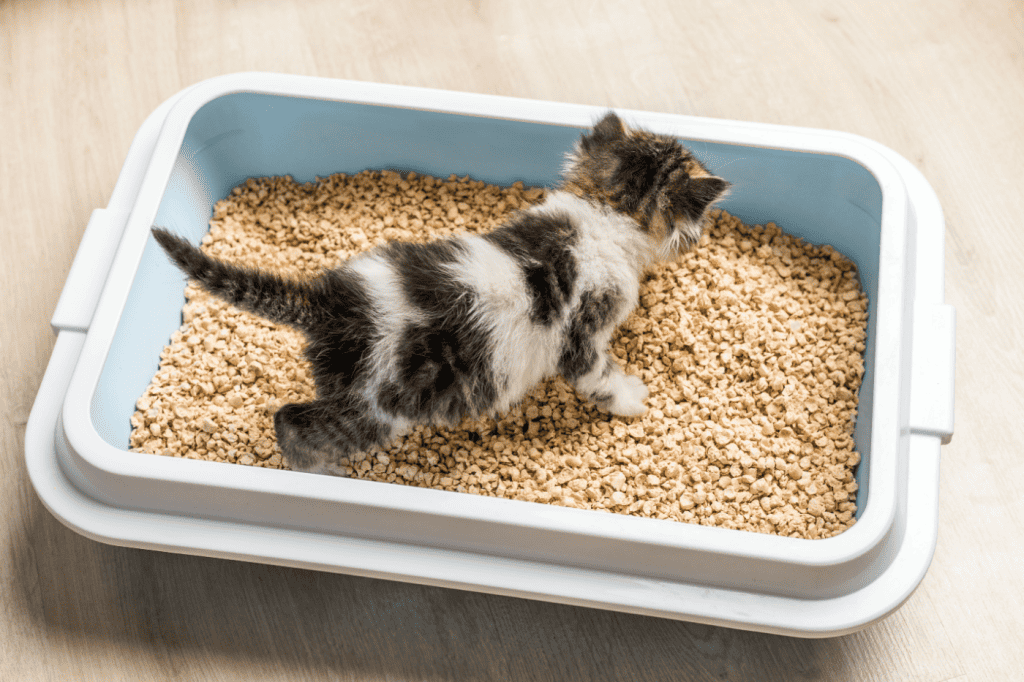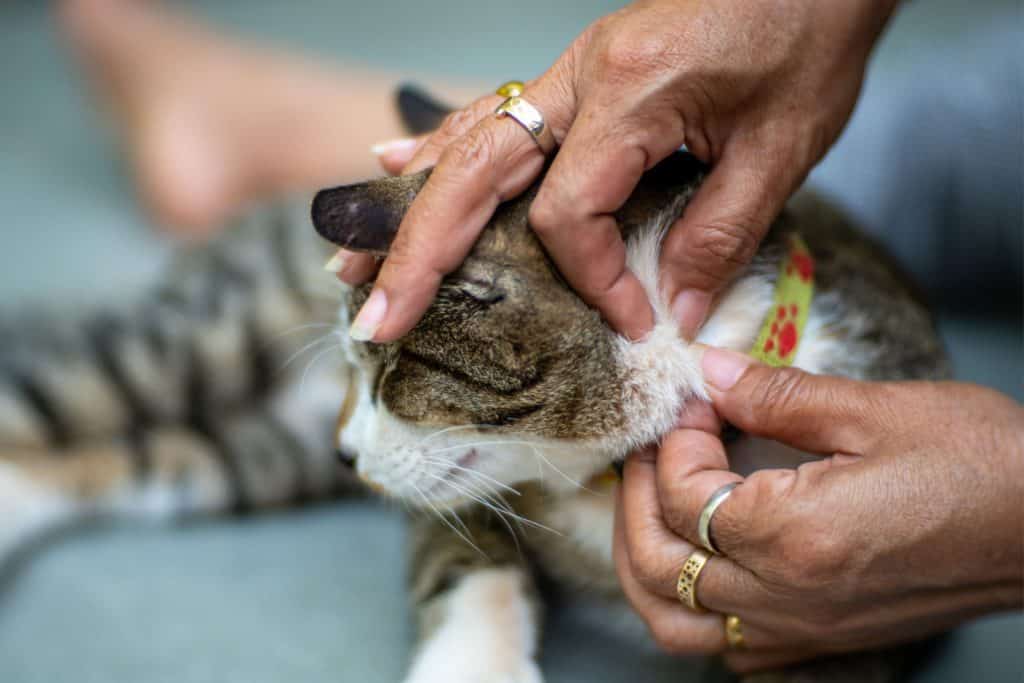Dealing with fleas can be a frustrating experience for cat owners, and it's even worse when they invade your cat's litter box.
But don't worry, we've got some practical solutions to help you tackle this issue and ensure your cat's comfort.
In this article, we'll walk you through four simple steps to address flea infestations in your cat's litter box.
First, we'll share easy cleaning methods to keep the litter box flea-free. Then, we'll show you how to check your cat for fleas and take appropriate action.
Next, we'll explore different treatment options and the importance of consulting with a vet for the best approach. Lastly, we'll emphasize the need to treat everyone and everything that might have come in contact with your infested cat.
Throughout the article, we'll address common questions about fleas, their lifespan, and why they can persist despite treatment.
Join us as we provide tips and practical advice to help you create a comfortable and flea-free environment in your cat's litter box.
Four Steps To A Flea-Free Cat's Litter Box
Fleas have long plagued cat owners, causing discomfort for our beloved pets. Unfortunately, these persistent pests can even infiltrate your cat's litter box. So, what's the solution? We have some ideas to help you keep your cat's bathroom area free from fleas.
- Clean the Litter Box
- Check Your Cat for Fleas
- Evaluate Your Treatment Options
- Use Treatments on Everyone and Everything
Of course, these steps need a bit more explanation before starting the process yourself. We'll dive into more detail about each to ensure this process goes swimmingly.
Our following sections will also address a few additional flea questions that might be on your mind.

Step 1: Cleaning To Eliminate Fleas In The Litter Box
When it comes to tackling fleas in the litter box, some cat owners take drastic measures, replacing everything their cat uses - litter box, litter, toys, and bedding.
While this nuclear approach is highly effective, it may not be feasible for everyone.
If you can't afford to replace all items, don't panic. Carefully cleaning the infested litter box can still make it flea-free. Here's how:
- Empty the litter box completely, placing the litter in a tied plastic bag to prevent fleas from returning.
- Thoroughly vacuum the box, paying close attention to the sides and edges.
- Wash the box with mild detergent and hot water, avoiding disinfectants that may deter your cat from using it again.
- Skip spraying the box with flea spray to prevent any unpleasant smells for your cat.
For added prevention, consider using food-grade diatomaceous earth. Sprinkle it over the new litter to deter future fleas without any off-putting odors for your cat.
By following these cleaning steps, you'll create a flea-free environment in your cat's litter box and ensure a comfortable space for your feline companion.
Click Here To See More About This Product On Amazon.
Step 2: Check Your Cat For Fleas - Identifying The Issue
Cleaning the litter box is just one aspect of dealing with fleas. The primary concern is addressing the root cause, which is your cat's flea infestation.
These tiny insects don't seek out the litter box themselves; they end up there because they hitch a ride on your cat's body.
As a cat owner, you're likely familiar with the telltale signs of fleas. Excessive licking, constant itching, and the creation of hot spots from persistent skin chewing are all indications that your cat may be dealing with fleas.
With a careful examination, you can spot the fleas if you look closely enough. Evaluate the situation and assess the level of infestation to better understand the severity of the issue.
By checking your cat for fleas, you take a crucial step toward addressing the problem head-on and ensuring your furry friend's comfort.
Step 3: Evaluate Treatment Options For Effective Flea Control
When it comes to addressing fleas, it's crucial to consult a vet even if you don't spot any of these pesky insects on your cat. This consultation is essential as it allows the vet to assess any potential medical issues resulting from the flea infestation.
Regarding treatment, there are several options to consider. It is highly recommended to follow your vet's guidance in combating this problem. Here are a few treatment suggestions that experts may propose:
Natural Treatment Options
The simplest solution is using a flea comb. These products are often used for children when an infestation of lice or fleas happens at school.
Make sure to comb thoroughly and push it right into your cat's fur. After all, fleas like to burrow themselves into fur to avoid easy detection.
During this process, have a bowl of soapy water nearby to rinse off the comb and drown these pesky insects when they fall off it. You'll need to keep repeating this process for two or more weeks to ensure the infestation is gone.
Another method would be giving your cat a bath to promote flea removal. We suggest using a shampoo containing natural oils like eucalyptus or lavender.
But please, remember to be careful. Washing a cat isn't easy as they have an instinctive hatred of water.
It will likely end up being a stressful and potentially horrifying experience for both of you. However, it's a valid option as the bathwater will drown your cat's fleas.
The scent will help keep fleas away, too, as they don't like the smell of natural oils.
Lastly, it would be best if you kept the cat indoors until their flea infestation is eradicated. Outside is usually where your cat will pick up these nuisances in the first place.
But this action might be a little tricky, depending on their behavior. For instance, a cat who's used to going outside will make quite a fuzz about being on lockdown. Please do your best to ignore their pleas and stay vigilant when opening outside doors.
Over the Counter Flea Treatments
But the fastest safe method would be buying an effective over-the-counter flea treatment. An excellent example of one would be Bayer Advantage II Flea Prevention for Cats. This product is easy to use and works on all fleas regardless of their life stage.
You can expect this product to start working 12 hours after the first contact. It will then ensure your cat remains protected for up to 30 days.
It's also considered waterproof after 24 hours, which means you could use the bathing method as additional coverage.

Click Here To See This Flea Treatment For Cats On Amazon.
Step 4: Treating Everyone And Everything
When dealing with a flea infestation, it's crucial to remember that other pets, children, or adults who have had contact with the cat may also be affected.
To completely eradicate fleas from your home, each individual needs their own treatment.
For humans, addressing flea bites and alleviating itching can be achieved with over-the-counter 1% hydrocortisone or antihistamines.
These medications provide relief from the discomfort caused by flea bites. It's important to note that this process may take time.
In reality, eliminating fleas from an infested home can be a lengthy endeavor, often spanning up to three months.
The duration depends on the severity of the infestation, as these persistent insects can be both bothersome and relentless. Rest assured, this is not a problem to be taken lightly or ignored.
By ensuring that everyone and everything in your household receives appropriate treatment, you'll be on the path to completely eradicating fleas and restoring a flea-free environment.
Remember, perseverance is key to overcoming this common nuisance.

How Long Do Fleas Live In Your House?
A flea's average life cycle is 30-90 days, but their lifespan can vary quite a bit. Fleas living in favorable inside conditions can live up to a year. On the other hand, outdoor fleas will die off when winter temperatures drop to freezing levels.
This situation makes your home look like a tempting alternative for them to live in. These insects thrive in warm climates, and most people accommodate them by keeping their homes heated in winter. As a result, our homes become optimal conditions for these annoying creatures to excel.
How Long Does It Take For Fleas To Die With Revolution?
Revolution is a popular, topical treatment used to protect pets from issues such as fleas. But people often wonder how effective this product is at doing this job. Well, several studies concluded Revolution was able to kill over 98% of the fleas within 36 hours.
As for how it handled entire infestations, Revolution showed remarkable promise in this area. It was able to gain 90% control of flea infestations 30 days after the first dose. It's quite clear that this topical treatment is more than capable of handling these little pests.
Why Am I Still Finding Fleas After Treatment?
Most flea products will do a great job at killing adult fleas and stopping them from laying more eggs. But this doesn't solve the entire problem.
You see, only about 5% of the flea population lives on your cat. This reality means that there's another 95% living in your environment.
The number of fleas on your cats is only a small piece of this gross puzzle. You still need to do some work and get rid of the other 95%.
These include the larvae, pupae, and tiny eggs living in your home, which will usually be found around resting areas.
Due to this, plenty of fleas are around to replace the ones being killed by your cat's flea treatment.
It is worth noting that many of these treatments take a little bit to kill these insects, hours or days. So, you might see ten fleas on your pet, but it doesn't mean the treatment isn't working.
Do Fleas Die in Winter?
As we mentioned earlier, fleas can't survive when exposed to freezing temperatures. The cutoff temperature seems to be below one degree Celsius for five straight days. However, this stat is only relevant for outdoor fleas.
Your home will never reach these freezing levels to kill an indoor one. These indoor fleas will instead thrive and survive during the winter.
Final Tips For A Flea-Free Haven
Creating a flea-free environment for your cat is essential for their comfort and well-being. By following the steps outlined in this guide, you can effectively address flea infestations in your cat's litter box and throughout your home.
Remember to clean the litter box thoroughly, check your cat for fleas regularly, and consult with a vet for proper treatment options. Treat everyone and everything in your household to ensure complete flea control.
Additionally, understand that flea eradication is not an overnight process. It may take time and persistence to eliminate all stages of the flea life cycle. Keep in mind that fleas can survive indoors during winter, necessitating year-round vigilance.
By staying proactive, utilizing reliable treatments, and maintaining good hygiene practices, you can create a flea-free haven for your beloved feline companion. Enjoy a happier, healthier home for both you and your cat, free from the nuisance of fleas.
If you have any further questions or need assistance, feel free to reach out. Together, we can conquer fleas and provide the best care for your furry friend.




